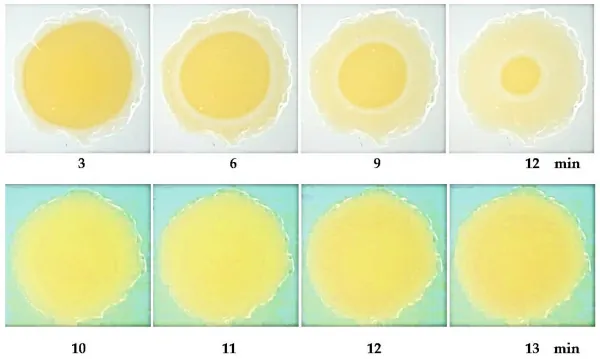
Breakthrough in Self-Oscillating Gels: Cobalt Complexes Lead the Way!
2024-10-11
Author: Nur
Introduction
In an exciting development, scientists from Immanuel Kant Baltic Federal University have successfully synthesized self-oscillating gels based on cobalt complexes for the very first time. These groundbreaking gels have the unique ability to periodically alter their geometric parameters, opening up new possibilities for advanced chemomechanical materials that convert chemical energy into mechanical oscillations. This innovative research promises advancements in device creation that leverage the collaboration of chemical waves for information processing.
Properties and Mechanism of Self-Oscillating Gels
Self-oscillating polymer gels are becoming increasingly sought after in the fields of chemistry, physics, and robotics due to their remarkable properties, which include variations in density, volume, and color. For instance, one of these gels can cyclically change in size, making it ideal for use in micropumps and actuators—essential components in converting chemical energy into mechanical movements. This oscillation in material properties is driven by the periodic oxidation-reduction Belousov-Zhabotinsky reaction within the gel.
While the full mechanism behind this reaction is complex—encompassing numerous individual reactions—it generally involves the bromation and oxidation of organic compounds like malonic acid in the presence of a bromate catalyst and mineral acid.
Shifting from Ruthenium to Cobalt
Traditionally, these self-oscillating gels have relied heavily on ruthenium complexes for their synthesis. However, these materials have significant drawbacks, including high costs, sensitivity to light, and complex manufacturing processes. In light of these limitations, researchers are now seeking more accessible alternatives.
The team from Kant Baltic Federal University (based in Kaliningrad) has innovatively tackled this challenge by using cobalt complexes that are not only economical and easy to synthesize but also possess insensitivity to light.
Types of Cobalt-Based Gels
The researchers produced two distinct types of gels: the first involves incorporating cobalt complexes into cation exchange polymer resins based on polyacrylamide, while the second type was created through the copolymerization of cobalt complexes with acrylamide to form long molecular chains.
Both gel types exhibited the formation and propagation of chemical waves, resulting in visible changes at the submillimeter scale. Notably, one of the gels demonstrated a spectacular transition in color—from yellow to orange—while simultaneously altering its volume, shrinking and expanding in a rhythmic fashion.
Future Prospects and Applications
This unique property positions it as a promising candidate for the development of actuators suitable for soft robotics applications. Looking ahead, the research team is eager to continue their exploration of cobalt-based self-oscillating gels.
Their future goals include enhancing the strength of mechanical oscillations and mastering the ability to fabricate these gels into specified 3D shapes and sizes. This work potentially sets the stage for current and future innovations in actuator technology, dramatically impacting material science and robotics.
Conclusion
Stay tuned for more updates on this exciting frontier in self-oscillating materials, as researchers delve deeper into the realms of chemistry and robotics!



 Brasil (PT)
Brasil (PT)
 Canada (EN)
Canada (EN)
 Chile (ES)
Chile (ES)
 España (ES)
España (ES)
 France (FR)
France (FR)
 Hong Kong (EN)
Hong Kong (EN)
 Italia (IT)
Italia (IT)
 日本 (JA)
日本 (JA)
 Magyarország (HU)
Magyarország (HU)
 Norge (NO)
Norge (NO)
 Polska (PL)
Polska (PL)
 Schweiz (DE)
Schweiz (DE)
 Singapore (EN)
Singapore (EN)
 Sverige (SV)
Sverige (SV)
 Suomi (FI)
Suomi (FI)
 Türkiye (TR)
Türkiye (TR)